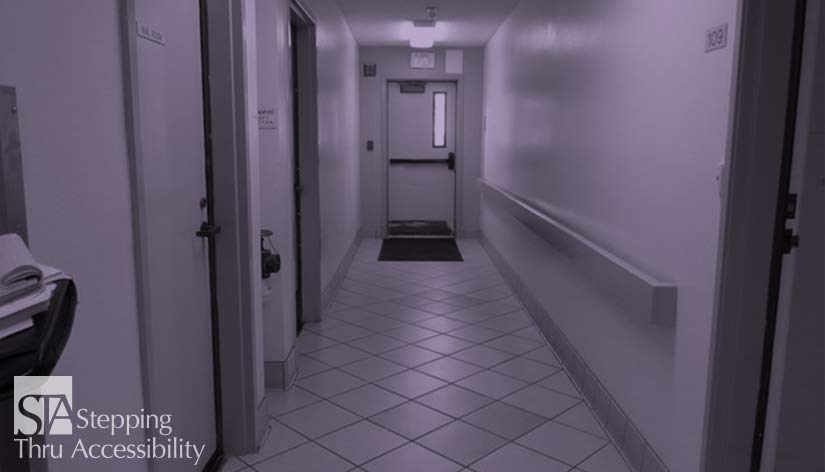Blog
Return to Blog »
Janis Kent, FAIA, Architect, CASp © April, 2022 As the Silver Tsunami increases with the aging of the baby boomer generation we will see more and more senior housing. In California with the Unruh Civil Rights Act, Section 51.2 thru 51.4 there are specific stipulations of what to provide for senior housing. Section 51.3.5 has specific requirements for senior living in intergenerational housing as well. There are a handful of requirements that need to be included within any senior housing project built from January 1, 2001 and onwards according to 51.2 and 51.3 regardless of the funding. Also be aware that these requirements do not apply to senior housing in the County of Riverside. Implementing the above requirements is somewhat straight forward. 11B-505.2 Where required. Handrails shall be provided on both sides of stairs and ramps. Generally someone who is using a walkway or corridor handrail also would have a cane or a walker. They may be using the railing to lean against as well, but it is not the same as mobility on a vertical rise such as a ramp or stairs which may affect stability. Note that sufficient light is not specifically stated under the Unruh Act, but AARP Andrus Foundation supported a study and article by Mariana Gross Figueiro, “Lighting the Way: A Key to Independence“ The other aspect for senior housing is that it pertains to a development with 35 or more dwelling units. A qualifying resident or senior citizen is considered someone who is 62 years or older or who is 55 years or older and living in a senior housing development. There are also requirements for a qualified permanent resident depending upon their relationship to the qualifying resident or senior citizen, ie spouse, caretaker, etc, and can include a child or grandchild who has a disability. If a project has an Allotment letter for California TCAC for seniors, there are other requirements as well over and above the Unruh Act. Nothing in this article constitutes legal or design advice for a particular project or circumstance. Be aware that your local City or County may have additional requirements that are different or more restrictive than the State or Federal requirements. Also, this article is an interpretation and opinion of the writer which may vary for a particular project or due to other circumstances. It is meant as a general summary – current original regulations should always be reviewed when making any decisions and specific advice by a qualified professional should be secured for a particular project or circumstance. © Janis Kent, FAIA, Architect, CASp 2022Senior Housing in California
